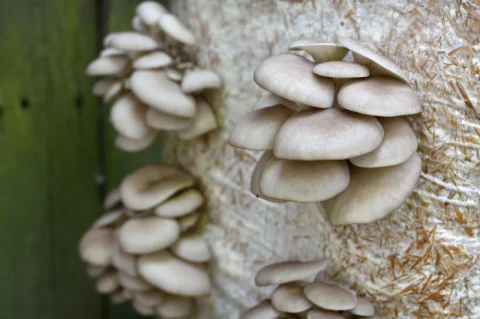Laminar Flow Hoods for Mushroom Cultivation
HEPA filters are used by mushroom cultivators to create laminar flow hoods. Their fine filtration ability is utilised to create sterile environments to prevent contamination of cultures. Contaminants include dust, dirt, fungi, bacteria, and viruses that can travel in the air.
Mushrooms are highly vulnerable to infection when they are first growing so cultivation requires a clean and sterile environment.

HEPA filters have multiple layers to provide a remarkably high level of filtration. An outer layer acts as a barrier against large particles, those that can be seen with the naked eye, including dust, hair and dirt. Inside the large filter is a collection of thin filters that act to prevent smaller particles from passing through. This thinner filter is made up of minute glass fibres that can catch the microscopic contaminants from the air. The combination of the larger and finer filter layers enable the HEPA to filter against both large and small particle sizes, thus creating a sterile environment.
HEPA filters are placed at the front of the hood to filter the incoming air to greatly reduce the chance of incoming airborne contaminants and therefore to create a sterile environment. A fan is placed within another wall of the hood to draw air in and across the HEPA filter. A pre-filter, with less air resistance than the HEPA (e.g. Promedia T15), is attached over the fan on the outside of the hood. A net/covering should be attached over the HEPA on the outside of the hood to protect the delicate filter, to lengthen efficiency.
The HEPA filters recommended for laminar flow hoods are of H13 and H14 efficiency. H13 prevent >99.95% of contaminants from flowing through and have a pressure drop of 90 Pa. H14 are slightly more efficient, preventing >99.995% of contaminants and have a pressure drop of 100 Pa.
Related Articles
Which depth of HEPA air filter do I need?
Generally your choice of depth of HEPA filter will depend on the frame in which you are fitting it. There is not much difference between the depths of HEPA air filter apart from airflow and pressure drop and so, if you are making your own frame, we ...Should I choose a wooden or metal framed HEPA filter?
Some customers assume that a wooden framed High Efficiency Particulate Air (HEPA) filter is a good choice as these are generally cheaper than the metal cased alternatives. However, whilst the filtration grade is the same, there are some important ...HEPA, Mushrooms, Mycology? What does it all mean?
A large proportion of our HEPA filters are bought by people and companies that grow mushrooms. These range from small enterprises where people are growing single varieties at home for friends and family to those growing larger volumes for their local ...Which types of filter do we supply for spray booths?
The filters we offer have two main jobs; Input filters ensure the incoming air to the spray booth or product preparation area is as clean having filtered out any dust and other unwanted particles as it is pulled into the booth and extraction filters ...Why Cardboard Procart Spray Booth Filters Are More Efficient Than Glass Fibre
The principle of air filtration in dry spray booths is very simple. The air enters the booth and is drawn, via an extraction fan which also carries any overspray, through an extraction filter. The choice of filter can depend upon the type of paint, ...